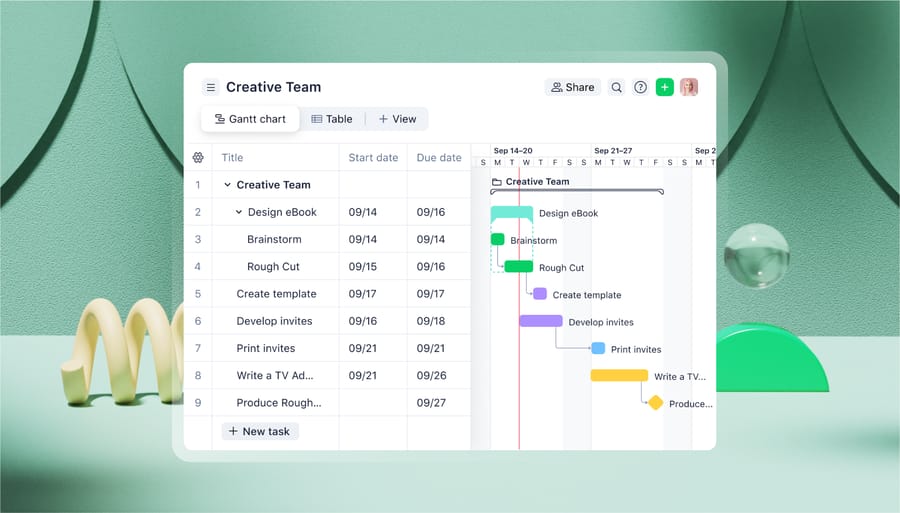Key takeaways:
- What is project tracking? It’s the process of monitoring a project’s progress, ensuring clarity and visibility for smoother decision making.
- What is the purpose of project tracking software? It centralizes task management, timelines, and responsibilities, enhancing collaboration and preventing delays.
- How can project progress be effectively tracked? Set measurable objectives, build a detailed project plan, and maintain clear communication among team members.
- What are some best practices for project tracking? Track individual and team work, leverage automation for updates, establish consistent habits, and create tailored views for different roles.
- What are key features to look for in a project tracker? Robust reporting, customizable dashboards, interactive tools, and real-time updates enhance efficiency and ensure project success.
Tracking projects effectively involves more than just keeping tabs on deadlines. It’s about creating clarity — for your team, key stakeholders, and yourself. When you know exactly where a project stands, what lies ahead, and what needs attention, you’ve set yourself up for success.
The right project tracking tools and strategies keep your team members grounded in reality. Instead of relying on scattered updates or gut instincts, you get clear, actionable data on task progress, resource allocation, timelines, and more. No matter how many initiatives you’re juggling, project tracking gives you the visibility needed to make better decisions more quickly.
In this guide, we’ll break down what project tracking is, why it matters, how to do it well, and how to find a tool that makes the process easier. Let’s start with the basics.
What is project tracking?
Project tracking is everything that goes into monitoring a project’s progress across its lifecycle. When done right, project tracking gives your team the visibility it needs to stay on top of complex and evolving tasks. Whether you’re overseeing a product launch, a website redesign, or a hiring initiative, tracking helps answer essential questions. Are we on pace? Are we staying within budget? Are any deadlines at risk?
Thankfully, modern project trackers put the answers to these and other critical questions at your fingertips.
What is a project tracker?
A project tracker is software that leverages a variety of tools to help your team track project progress in real time. It centralizes key details like tasks, timelines, and responsibilities so everyone stays on the same page. Without a project tracker, it’s far too easy for deadlines to slip or tasks to fall through the cracks. A good project tracker gives you a clear picture of what’s been completed, what’s still in progress, and what’s coming next — ideally through automated updates and notifications that reduce the need for manual input.
Today’s project trackers go far beyond simple to-do lists. You can use Gantt charts to visualize timelines, dashboards to display real-time updates, and automated reports to keep stakeholders informed. In short, if you want a team that’s focused on the end goal without losing sight of the details, project trackers are the answer.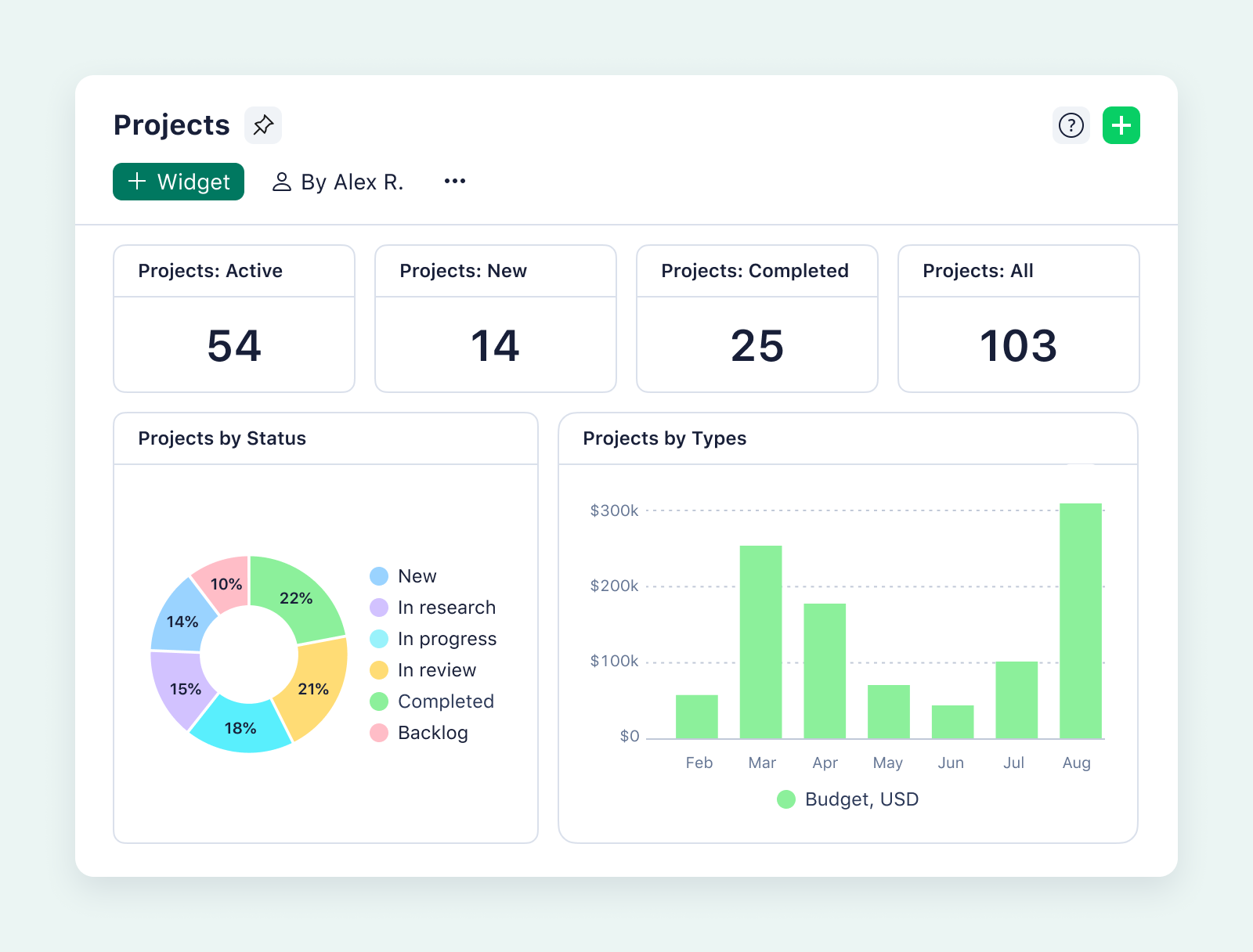
The benefits of project tracking software
So, just how does project tracking software transform how teams plan and deliver work? It starts with real-time visibility into timelines, budgets, and where tasks stand. You don’t need to dig through spreadsheets or send yet another “status?” email — instead, there’s an easily accessible single source of truth for everyone to reference. This transparency lets your team keep an eye on all the moving pieces and course-correct before minor issues turn into major delays.
If that wasn’t enough, how about leveling up collaboration? Instead of siloed updates and scattered files, team members get a shared space to record progress, share comments, assign tasks, and update deadlines. The clarity this provides can make the difference between project failure and success, especially when multiple departments or remote teams are involved.
And when it comes to resource management, project tracking tools give your team a major edge. You can see who’s overloaded, who’s underutilized, and how to shift workloads to get more done while avoiding burnout.
How to track project progress
While project trackers make the process easier than ever before, project tracking still benefits from a consistent, strategic approach. Here are a few steps that will empower your team to track project progress effectively, no matter what kind of work you’re managing.
1. Lay out measurable objectives
You can’t track progress if you don’t know what “progress” actually looks like. That’s why setting measurable objectives is the first and most important part of project tracking. These shouldn’t be vague goals like “increase engagement.” Instead, you need specific targets you can actually measure, like “boost email click-through rates by 20% in Q2” or “finalize the product prototype by June 15.”
Before you start nailing goals down, touch base with other shareholders to align on the project’s purpose and expected outcomes. A few minutes spent ensuring that everyone is on the same page can save hours or days’ worth of frustration later on.
After collaboratively establishing high-level objectives, translate these into measurable targets using frameworks like SMART goals or OKRs (objectives and key results). When every goal is tied to a number or deadline, tracking becomes both easier and much more meaningful.
Don’t fall into the common pitfall of setting objectives that are either too broad or too disconnected from daily work. To avoid this, involve team members in the goal-setting process. You can pressure-test your objectives with them by asking questions like “How will we know we’ve achieved this goal?” If the answer isn’t crystal clear, keep refining.
2. Build a project plan
Once your objectives are in place, you need a plan to achieve them. A solid project plan lays out key information on tasks, timelines, milestones, dependencies, and assigned resources. Think of this as a roadmap that makes effective tracking possible. It shows where you’re going, when you’re supposed to arrive, and who’s responsible for every aspect of getting you there.
Start by listing the tasks required to meet each objective. Then group them into project phases — if necessary — assign responsible team members, and estimate how long each task will take. A project tracking tool with tools like Gantt charts for visually mapping the entire project really comes in handy here. You should also consider setting milestones to mark major achievements. And don’t forget to account for any task dependencies — if a critical task gets delayed, it might impact everything downstream.
Just as when setting your objectives, the biggest mistake you can make here is planning in a vacuum. Don’t try to do it all yourself. Get input from the people who will actually be doing the work to ensure timelines are realistic and all required tasks are accounted for. Once the plan’s in motion, don’t treat it like a static document. Update it as things evolve, as a plan that adapts is one that delivers.
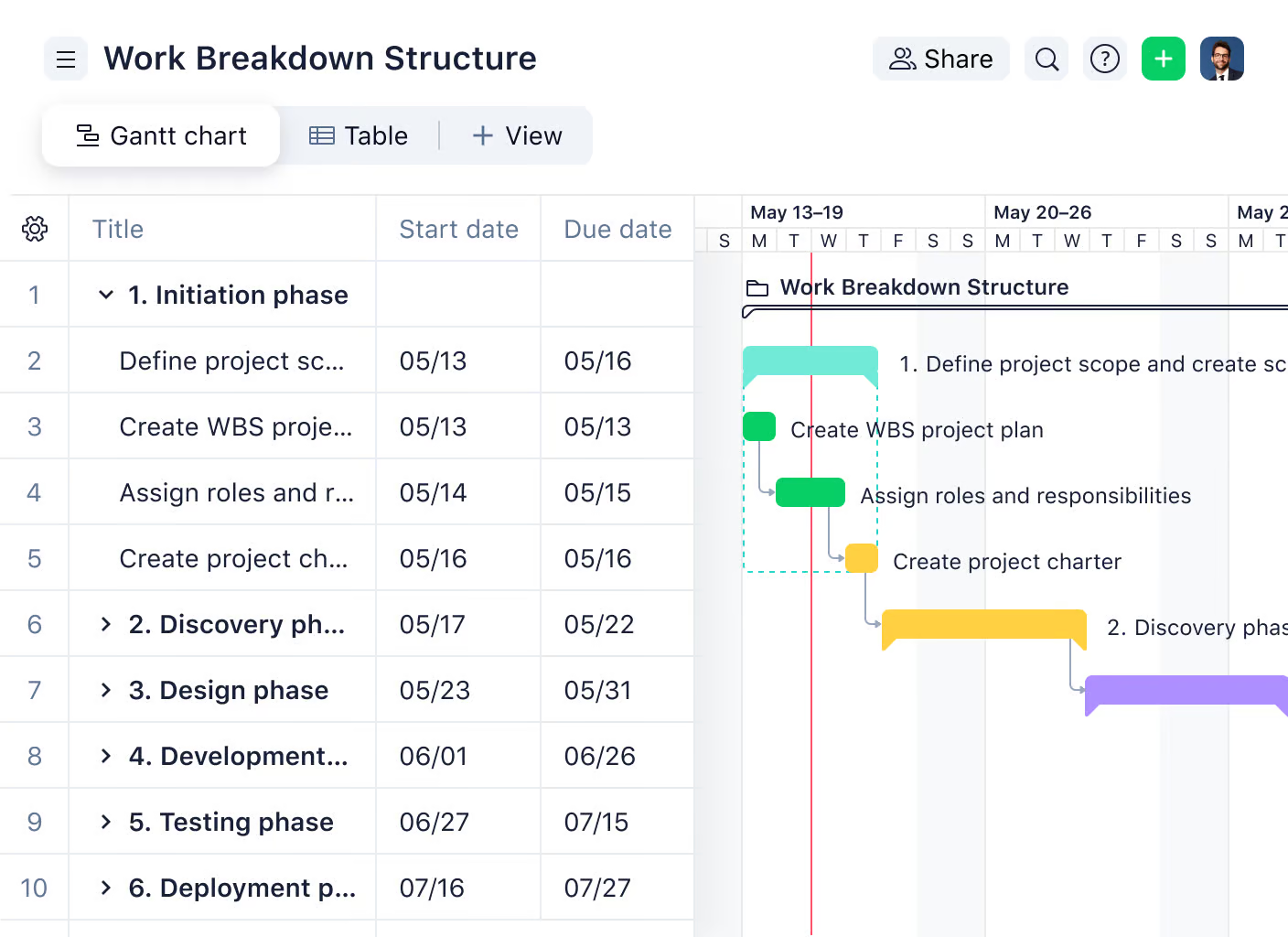
3. Plan for effective communication
Few things derail project tracking more quickly than a lack of clear communication. Even the most detailed tracker won’t help if your team doesn’t know what’s expected of them, when to check in, or how to flag when something’s off track. Communication is the glue that holds all the many moving parts involved in any project together.
Start by setting expectations around how updates will be shared. Will you use weekly standups? Slack channels? Automated dashboards? All of the above? Choose channels that fit your team’s workflow — and be consistent. Make sure everyone knows when updates are expected and what kind of information should be included. It’s also worth establishing who’s responsible for communicating project status to stakeholders outside the team, so nothing gets lost between organizational levels.
A big trap is assuming that “no news is good news.” Just because someone hasn’t reported a delay doesn’t mean things are going smoothly. Build feedback loops into your process — like regular review meetings or status check-ins — and foster a culture where people feel safe sharing anticipated obstacles early. Transparency now saves fire drills later.
4. Create your project tracker
Now it’s time to build the actual tracker that will keep your team accountable and give everyone visibility into what’s happening. This is where project tracking software really earns its keep. The best tools provide centralized, real-time information on tasks, deadlines, and communication, while automatically delivering critical insights into how the project is progressing.
The steps for creating your project tracker are similar in most project management platforms: Build out your tasks, assign owners, set due dates, and connect dependencies. You should also leverage views and tools that make sense for your team’s workflows. Gantt charts are great for timeline visibility, Kanban boards work well for Agile teams, and dashboards can help leadership see high-level progress whenever they want to check in.
Customization is your friend here. Use tags or custom fields to sort tasks by priority, phase, or team. And take advantage of integrations with calendars, messaging apps, and the cloud to keep everything connected. The more your tracker reflects how your team members actually work, the more likely they are to use it consistently.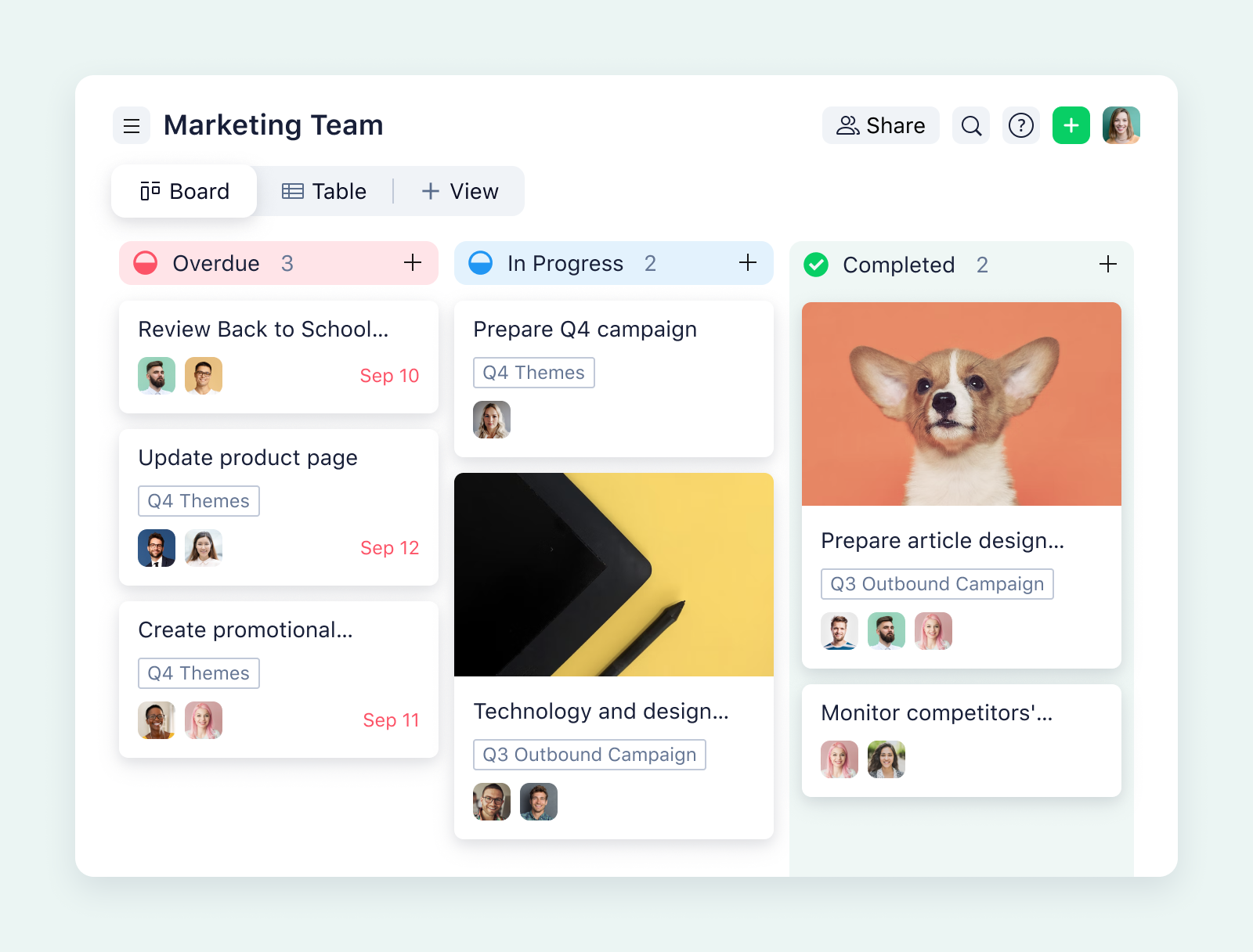
5. Monitor project progress and keep your tracker updated
Your project tracker isn’t a “set it and forget it” tool, and monitoring progress should go beyond just checking boxes. You have to compare what’s happening now with what you planned, identify any gaps, and address potential issues before they impact the project.
Establish a cadence for reviewing your tracker. This might mean daily updates for fast-moving sprints, or weekly checkpoints for longer timelines. Encourage team members to update task statuses and flag issues directly in the platform. This keeps your data accurate and ensures that decision makers aren’t working off old information. Project management solutions that automatically notify team members of task status changes, team member comments, and other important bits of information are, as always, invaluable here.
Finally, watch for signals that something’s off track, like missed milestones or tasks that stay “in progress” too long. When you spot trouble, don’t just shift the deadline — dig in to understand the cause and actively work to address any blockers. And when things are going well? Celebrate that too. Project tracking isn’t just about avoiding failure — it’s about recognizing progress, motivating your team, and building on that momentum to achieve project success.
Project tracking best practices
Even with a great project tracker in place, how you use it day-to-day can make or break your project. The best tracking tools are flexible, but without clear habits and thoughtful use, they can quickly become bloated, outdated, or ignored. These four best practices will help keep your project tracking meaningful and actionable.
| Track work at both the individual and team levels |
Zooming in on individual progress helps you catch issues early, while zooming out to the team level gives you the big-picture view you need to keep projects on course. Your tracker should do both. Break large initiatives into discrete, owner-assigned tasks, while grouping workstreams by department, sprint, or milestone to track progress across teams. |
| Leverage automation where it makes sense | Manual status updates can eat up hours — and let’s face it, people forget. Automation keeps your tracker running smoothly while minimizing overhead. Use built-in automations to notify team members when deadlines approach, change task statuses when dependencies are cleared, or send weekly progress summaries. When your tool handles the busywork, your team can focus on actual work, and you spend less time hounding them for updates. |
| Establish consistent tracking and reporting habits | Consistency is what turns a project tracker from a static doc into a living source of truth. Set expectations for how often tasks should be updated, when reports go out, and how team members should communicate both in and out of your project management platform. Good tracking habits help build team accountability and keep stakeholders in the loop. |
| Build customized views that work for different roles | Not everyone needs to see every detail. A product owner may want a Gantt chart showing deadlines and dependencies, while an exec might prefer a clean dashboard of key performance indicators (KPIs). Most tracking platforms offer customizable views, so use them. Tailor views by role, department, or priority so people can quickly access what matters most to them. The easier your tracker is to navigate, the more valuable it becomes. |
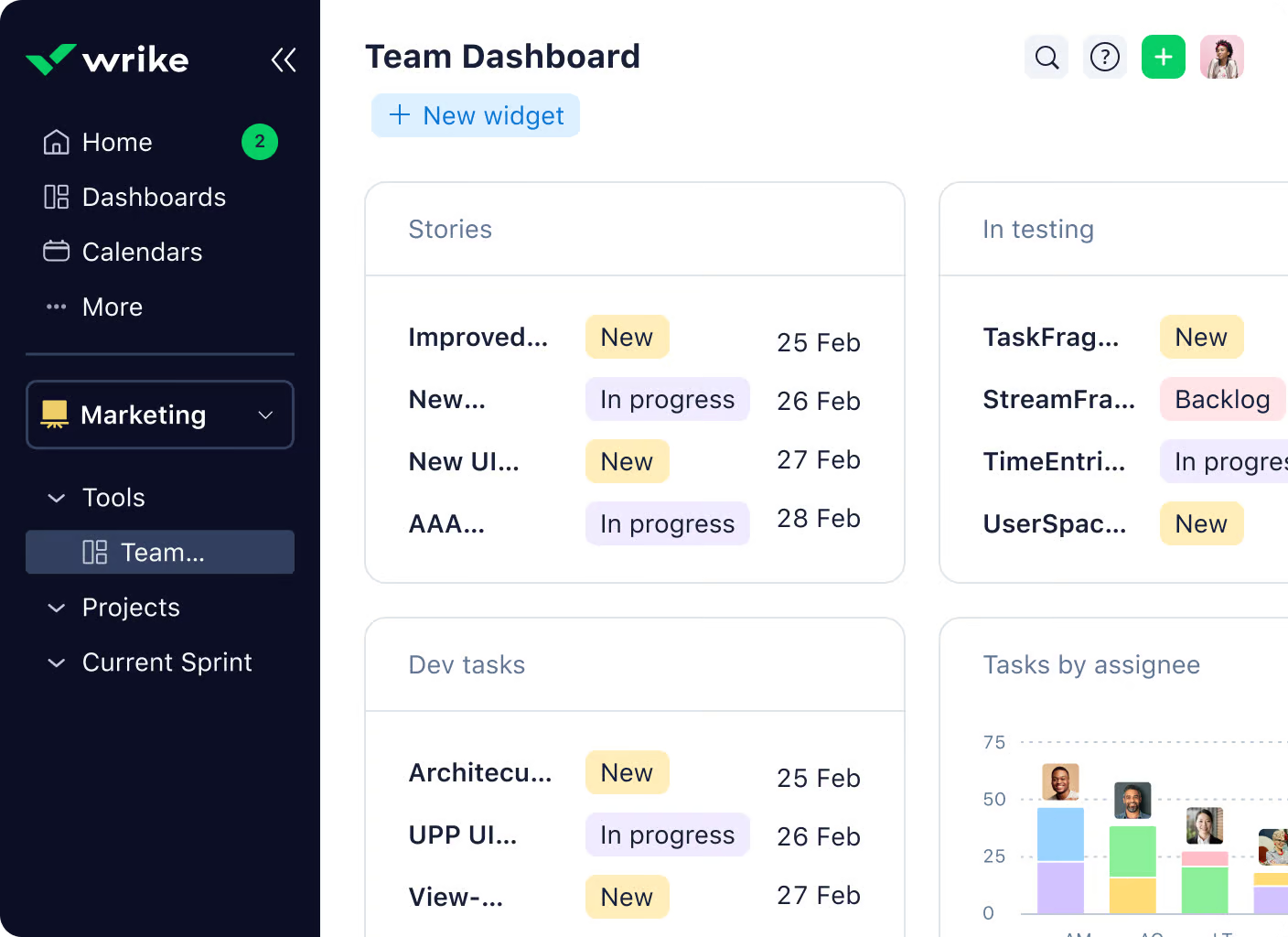
Project tracker tool features
The right project tracking software won’t just help you stay on top of your deadlines — it will streamline workflows across your company. Look for tools that offer robust reporting features with ready-to-use templates, so you’re not building every chart or report from scratch. Custom request forms that are auto-routed to the right person save time while keeping work on team members’ radars. And once a project kicks off, robust task and subtask organization help teams break complex work items into manageable, trackable pieces.
You’ll also want interactive features that make the day-to-day easier for everyone. Drag-and-drop Gantt charts let you easily shift timelines when priorities change. Customizable dashboards and Kanban boards help each department view progress in a format that fits how they work best. And for managers focused on efficiency, built-in time tracking tools provide real-world data you can use to plan better next time. When everything lives in one place and updates in real time, it’s much easier to keep projects moving forward without constant check-ins.
Wrike offers all these features — and a lot more — to help you simplify, scale, and succeed with your project tracking.
Start tracking projects with the right solution
Wrike is a versatile project management solution that’s dedicated to keeping your team connected and productive. From project tracking to workflow management to integrations, Wrike has everything team members need to kick projects off quickly and finish strong.
Try a free trial of Wrike today and see how easy project tracking can be.




